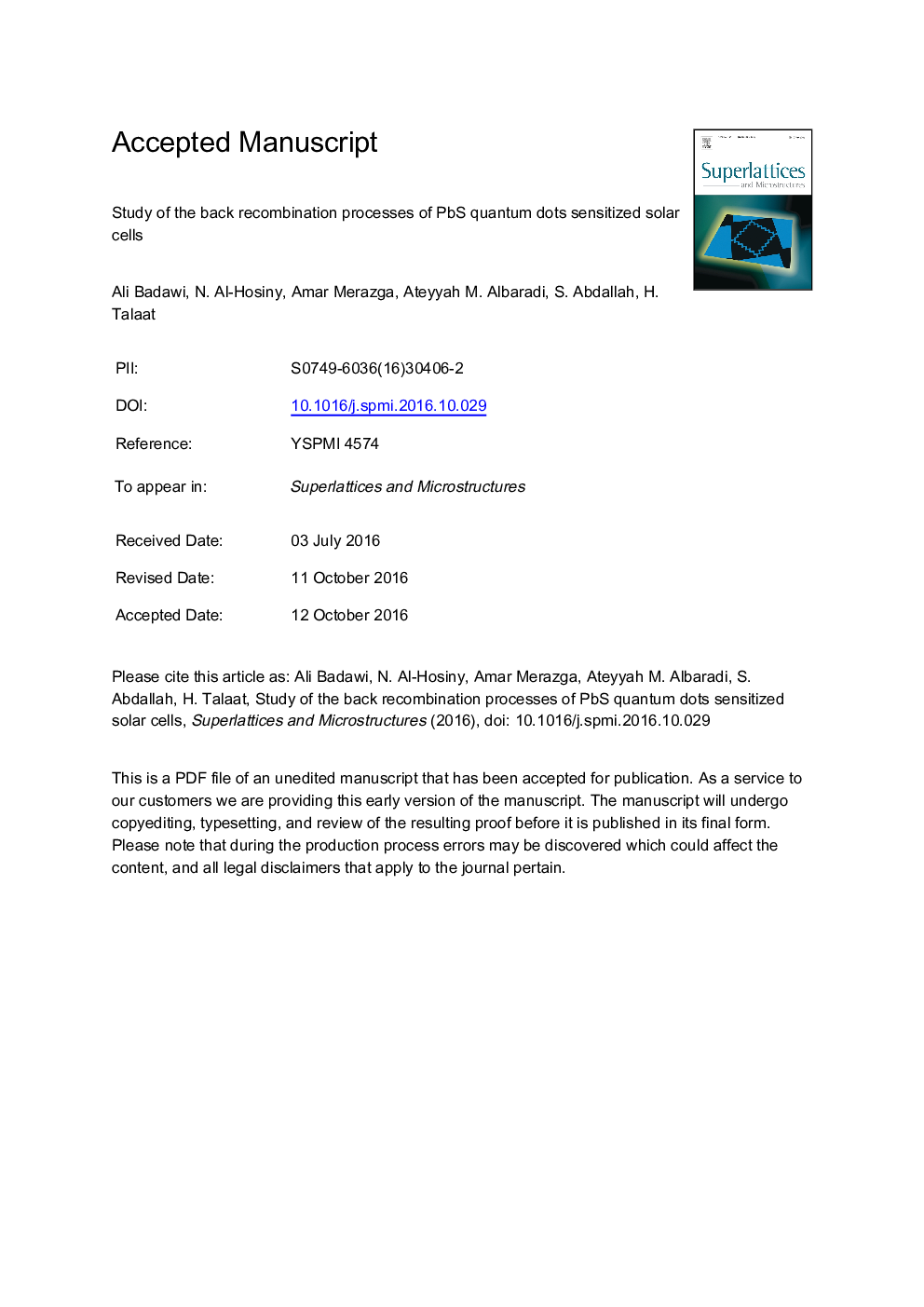| Article ID | Journal | Published Year | Pages | File Type |
|---|---|---|---|---|
| 7941709 | Superlattices and Microstructures | 2016 | 49 Pages |
Abstract
In this study, the back recombination processes of PbS quantum dots sensitized solar cells (QDSSCs) has been investigated. PbS QDs were adsorbed onto titania electrodes to act the role of sensitizers using successive ionic layer adsorption and reaction (SILAR) technique. The energy band gaps of the synthesized PbS QDs/titania are ranged from 1.64 eV (corresponding to 756 nm) to 3.12 eV (397 nm) matching the whole visible solar spectrum. The hyperbolic band model (HBM) was used to calculate PbS QDs size and it ranges from 1.76 to 3.44 nm. The photovoltaic parameters (open circuit voltage Voc, short circuit current density Jsc, fill factor FF and efficiency η) of the assembled PbS QDs sensitized solar cells (QDSSCs) were determined under a solar illumination of 100 mW/cm2 (AM 1.5 conditions). The open circuit voltage-decay (OCVD) rates of the assembled PbS QDSSCs were measured. The time constant (Ï) for PbS QDSSCs (4 SILAR cycles) shows one order of magnitude larger than that of PbS QDSSCs (8 SILAR cycles) as a result of a decreased electron-hole back recombination.
Related Topics
Physical Sciences and Engineering
Materials Science
Electronic, Optical and Magnetic Materials
Authors
Ali Badawi, N. Al-Hosiny, Amar Merazga, Ateyyah M. Albaradi, S. Abdallah, H. Talaat,
